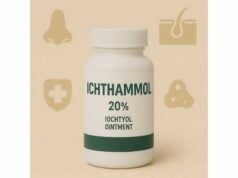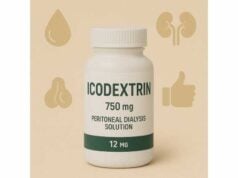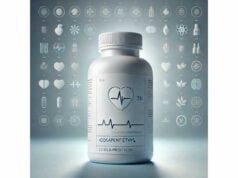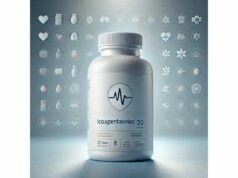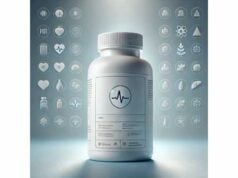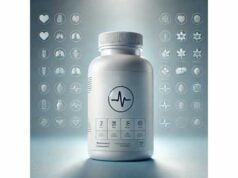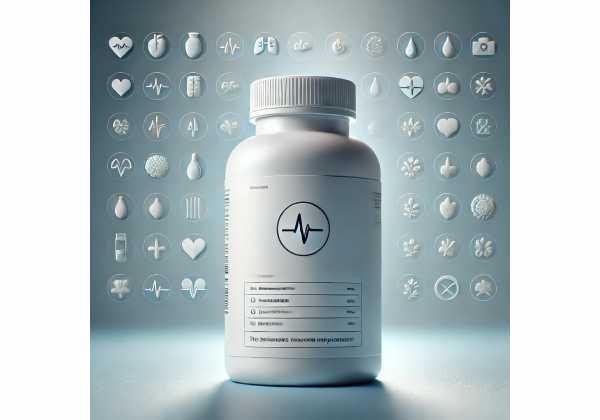
Imiquimod is a prescription-only topical immune response modifier used for certain skin conditions caused by sun damage or viruses. Rather than killing cells directly, it activates local innate immunity—especially toll-like receptor 7 (TLR7)—to trigger interferon and other cytokines that help the skin clear abnormal or infected cells. Clinicians prescribe specific strengths and schedules for three main problems: actinic keratoses on sun-exposed areas, external genital and perianal warts caused by human papillomavirus (HPV), and superficial basal cell carcinoma on select sites. When used correctly, imiquimod can clear targeted lesions without surgery; however, predictable redness, crusting, and irritation often occur as part of the treatment response. This guide explains how imiquimod works, which conditions it treats, exact application steps, dosing schedules, side effects, who should avoid it, and what results to expect so you can partner with your clinician and use it safely and effectively.
Key Insights
- Immune-activating cream for actinic keratoses, external anogenital warts, and superficial basal cell carcinoma.
- Typical regimens: 5% three times weekly for up to 16 weeks (warts); 5% two times weekly for 16 weeks or 3.75% daily in cycles (actinic keratoses); 5% five times weekly for 6 weeks (superficial BCC).
- Local reactions—redness, burning, crusting—are expected; pause or adjust if severe or if ulceration extends beyond the treatment field.
- Avoid in pregnancy without specialist guidance and in patients after organ transplant or on strong immunosuppression unless a specialist directs use.
Table of Contents
- What is imiquimod and how does it work?
- What conditions does imiquimod treat?
- How to apply imiquimod correctly
- Dosing schedules that clinicians use
- Side effects, precautions, and who should avoid it
- Evidence strength and what to expect from treatment
What is imiquimod and how does it work?
Imiquimod is a small-molecule immune response modifier formulated as a topical cream (most commonly 5% and 3.75% strengths). Unlike destructive therapies that freeze, burn, or surgically remove lesions, imiquimod stimulates local skin immunity so your body can recognize and clear atypical or infected cells. The key pharmacology centers on toll-like receptor 7 (TLR7), expressed on innate immune cells like plasmacytoid dendritic cells and certain keratinocytes. When imiquimod engages TLR7, it initiates a signaling cascade that increases interferon-α, tumor necrosis factor (TNF), and interleukins (e.g., IL-6, IL-12). These cytokines recruit effector cells, promote antiviral states in surrounding tissue, and encourage immune-mediated destruction of abnormal cells.
This “teach the skin to fight” approach has several practical consequences:
- Lesion-selective inflammation: Treated spots typically become red, tender, scaly, and may crust. Paradoxically, a stronger local reaction often correlates with better clearance, because the immune system is active where it needs to be.
- Field therapy potential: For conditions like actinic keratoses that occur on sun-damaged “fields,” imiquimod can treat visible lesions and subclinical ones within the same area, potentially lowering short-term recurrence within that field.
- Viral clearance support: In HPV-related warts, imiquimod helps your immune system recognize viral proteins and mount a response that reduces recurrence compared with purely destructive methods in some patients.
Imiquimod is not a systemic immune booster. Systemic absorption is low with typical use on intact skin over limited areas, but application area and barrier integrity matter: large fields or eroded skin increase absorption and side-effect risk. Formulations differ by concentration and vehicle (sachets or pumps), which influences how often and how long you apply it. Because it modulates the immune system, clinicians individualize schedules to balance efficacy with tolerability.
Finally, imiquimod is condition-specific. It is not appropriate for all skin cancers or viral lesions. Superficial basal cell carcinoma is an on-label use; nodular or infiltrative BCC and squamous cell carcinoma generally require other treatments. HPV warts respond inconsistently; some patients need combination or alternative therapies. Understanding where imiquimod shines helps set realistic expectations and avoid misuse.
What conditions does imiquimod treat?
Imiquimod has three principal, regulator-recognized indications. Your clinician may tailor treatment within these boundaries or discuss off-label uses in specific scenarios.
1) Actinic keratoses (AK) on the face or scalp
AKs are rough, scaly spots that develop on chronically sun-exposed skin and represent early keratinocyte atypia. They matter because a fraction can progress to squamous cell carcinoma over time. Imiquimod is a common field therapy option when AKs are numerous or when you’d like to treat visible and subclinical lesions together. Two strengths are used:
- 5% cream typically applied twice weekly for 16 weeks to the defined field (e.g., forehead, balding scalp, cheeks).
- 3.75% cream often applied once nightly in cycles that allow the skin to recover (details under dosing).
The goal is partial-to-complete clearance of AKs within the field. Some clinicians combine or sequence therapies (e.g., cryotherapy to thicker lesions before starting imiquimod, or alternating courses with topical 5-fluorouracil) depending on thickness, location, and patient tolerance.
2) External genital and perianal warts (EGW) caused by HPV
For patients who prefer a home-applied option, imiquimod can be effective, especially for smaller or newer warts. It’s used on external skin only (not inside the urethra, vagina, anus, or on mucosal surfaces) with very explicit application and wash-off instructions. Response varies; some warts clear in a few weeks, while others need alternative therapies such as cryotherapy, surgical removal, or sinecatechins. Adherence and early initiation improve outcomes. Even with clearance, HPV can persist; new lesions may appear, so follow-up matters.
3) Superficial basal cell carcinoma (sBCC)
For carefully selected superficial BCCs in low-risk sites, imiquimod can be an alternative to surgical excision, especially when scarring risk, anatomic location, or patient preference make a non-surgical approach attractive. Treatment is more intensive (five times weekly for six weeks is common) and requires biopsy-proven diagnosis and close follow-up. Response is judged both clinically and sometimes with repeat biopsy. If a lesion fails to fully clear, surgical management is recommended.
Other contexts (clinician-guided only)
Dermatologists sometimes consider imiquimod off label for conditions like molluscum contagiosum in adults, some in-situ keratinocyte neoplasias, or as adjunct therapy around certain surgical sites. Evidence and success rates vary substantially, and irritation can be significant. These uses should be discussed with a specialist who can weigh benefits versus alternatives and monitor progress.
Key takeaway: imiquimod is not a universal wart or skin-cancer cream. It has well-defined niches where local immune activation offers excellent value—particularly AK field therapy, selected external warts, and superficial BCC—when the right strength and schedule are used under medical supervision.
How to apply imiquimod correctly
Correct technique maximizes efficacy and minimizes side effects. Because most reactions are local and dose-dependent, these practical steps matter as much as the schedule.
Before you start
- Clarify which strength you have (3.75% vs 5%) and the diagnosis you’re treating.
- Mark the treatment field with your clinician: e.g., the balding scalp, one cheek, or the external wart margins.
- Decide on start date—many people choose a period with fewer social events, since redness and crusting peak after 2–3 weeks.
Step-by-step application
- Wash and dry the area gently. Wait until the skin is fully dry (10–15 minutes).
- Apply a thin film of cream exactly to the treatment field or wart, avoiding normal surrounding skin as much as possible. A common amount is a pea-sized quantity for an area about 5 × 5 cm, but follow your clinician’s instructions.
- Massage in until the cream disappears. Wash hands thoroughly.
- Leave on for the prescribed contact time (often 6–10 hours), then wash off with mild soap and water. Nighttime application is common so the wash-off coincides with morning showering.
- Moisturize after wash-off if directed; bland, fragrance-free moisturizers can reduce dryness and stinging without impairing efficacy.
Managing the reaction
- Expect redness, burning, itching, scaling, and crusting. These signs typically begin in week 1–2, peak mid-course, and then settle after completion.
- If reactions become intense (severe pain, confluent erosions, difficulty sleeping), take a rest period (e.g., pause for 2–3 days) or reduce frequency per your clinician’s plan.
- Avoid picking crusts; allow natural detachment to minimize scarring risk.
- Protect treated fields from sun exposure during therapy and for several weeks afterwards; use a broad-spectrum SPF 30+ and protective clothing.
Special instructions by indication
- Actinic keratoses (field): Apply only within the defined field; consider petrolatum as a buffer on margins, eyelids, or corners of the mouth to prevent spillover irritation.
- External genital/perianal warts: Apply strictly to external keratinized skin. Do not apply inside the urethra, vagina, anus, or on mucosa. Wash off after the directed contact time. Sexual contact during active application days may increase irritation for partners; barrier methods help, but many clinicians advise pausing sexual activity on application nights.
- Superficial BCC: Use the full schedule and do not stop early unless instructed; incomplete courses are associated with lower clearance.
When to call your clinic
- You develop fever, flu-like malaise, lymph node swelling that is severe or persistent, severe ulceration, or signs of secondary bacterial infection (increasing pain, pus, spreading redness).
- You are unsure whether a reaction is expected or an allergic contact dermatitis to the vehicle; clinicians can help differentiate and adjust care.
Applied correctly, imiquimod transforms the treated area into a temporary “immune training ground.” Discomfort is common but manageable with planned breaks, moisturizers, and good sun protection.
Dosing schedules that clinicians use
Dosing depends on indication, strength, and tolerance. The following patterns reflect widely used, label-aligned regimens; your clinician may modify them for your situation.
Actinic keratoses (face/scalp field therapy)
- Imiquimod 5%: Apply two times per week (e.g., Monday/Thursday) for 16 weeks. Contact time is usually 6–10 hours before washing off.
- Imiquimod 3.75%: Apply once nightly, often in two 2-week cycles separated by a 2-week rest (2 weeks on, 2 off, 2 on), or daily for up to 8 weeks, depending on national labeling and clinician preference.
- Adjustments: If reactions are intense, reduce to once weekly temporarily or pause 3–7 days. Visible inflammation is expected; complete absence of reaction may suggest under-application.
External genital/perianal warts (patient-applied)
- Imiquimod 5%: Apply a thin layer 3 times weekly at bedtime (e.g., Monday/Wednesday/Friday) for up to 16 weeks. Wash off after 6–10 hours.
- Imiquimod 3.75%: Apply once nightly, every night for up to 8 weeks, with the same wash-off window.
- Treatment area: Only to external, visible warts. Discontinue once individual warts clear; continue others as directed. If no response after a full course, switch strategies (cryotherapy, surgical removal, or other topicals).
Superficial basal cell carcinoma (biopsy-proven)
- Imiquimod 5%: Apply five times weekly (e.g., Monday–Friday) for 6 weeks to cover the lesion and a margin of surrounding skin (commonly 5–10 mm), then wash off after 6–10 hours.
- Response assessment: Clinical clearance is assessed several weeks after completion; persistent or recurrent lesions require surgical management.
Amount to use
- Sachets typically contain 250 mg of cream—do not save opened packets for later use unless the product explicitly allows it. Pumps deliver metered doses for larger fields. A general rule is a thin film that disappears on rubbing; more is not better and increases irritation.
When schedules change
- Severe local reactions: Temporary pause, topical corticosteroid for comfort between cycles (if your clinician approves), then re-start at reduced frequency.
- Concurrent therapies: Some providers plan combination approaches (e.g., cryotherapy followed by imiquimod; or imiquimod after photodynamic therapy) to maximize clearance while containing downtime.
Time to results
- AK: Improvement and lesion clearance are typically judged at 8–16 weeks depending on the regimen.
- Warts: Responses may begin by 2–4 weeks; full courses extend to 8–16 weeks.
- sBCC: Clearance assessed after completing the 6-week course plus a healing interval.
The right schedule is the one you can complete. Discuss work, social calendar, and skin sensitivity with your clinician before starting; planning around these realities improves adherence and outcomes.
Side effects, precautions, and who should avoid it
Common local reactions (expected)
- Erythema, burning, itching, scaling, crusting, tenderness at the application site. These are part of the drug’s mechanism.
- Erosions or ulcerations within the field, especially on thin or sun-damaged skin. Manage with short drug holidays, gentle cleansing, bland moisturizers, and clinician-approved barrier ointments.
- Flu-like symptoms (fatigue, mild fever, aches) can occur, particularly with large fields; reduce frequency or pause if pronounced.
Less common or notable reactions
- Lymphadenopathy near the treated area. Usually self-limited; contact your clinic if painful or persistent.
- Hypo- or hyperpigmentation post-treatment (more visible in darker skin types); generally fades but can persist. Rigorous sun protection helps.
- Allergic contact dermatitis to vehicle components or, rarely, to imiquimod itself—suspect if inflammation spreads beyond the application field or appears after previously tolerable exposures.
- Exacerbation of inflammatory skin disease (e.g., psoriasis, eczema) in the treated area; discuss your history before starting.
Who should avoid or use with caution
- Pregnancy and breastfeeding: Use only if clearly needed and prescribed by a specialist. Most patients defer cosmetic or elective AK field therapy during pregnancy.
- Children: Safety and dosing differ by indication and region; pediatric use requires specialist guidance.
- Immunosuppressed patients (e.g., organ transplant, systemic immunosuppressants): Responses can be unpredictable; many clinicians prefer alternative therapies to avoid graft or disease complications.
- Autoimmune disease: Discuss risk–benefit; localized immune activation may aggravate certain conditions.
- Open wounds or mucosal surfaces: Do not apply on broken skin, inside the nose, mouth, urethra, vagina, or anus. For perianal warts, apply to external keratinized skin only.
Drug and product interactions
- Topical irritants (retinoids, alpha/beta hydroxy acids, harsh scrubs) increase burning and peeling; pause them in the treatment field.
- Photosensitizers (e.g., certain antibiotics) make sun protection even more critical.
- Occlusion (heavy bandages) can raise absorption; avoid unless your clinician directs it.
Practical safety tips
- Use the smallest effective field and stick to the dosing frequency and contact time.
- Sun protection is non-negotiable during and after therapy.
- Keep medication away from children and pets; ingestion requires urgent medical advice.
- If severe pain, spreading redness, fever >38.5°C, purulent drainage, or rapidly enlarging ulcerations occur, stop and seek evaluation—secondary infection or an atypical reaction may be present.
When monitored and adjusted thoughtfully, most patients complete therapy with tolerable side effects and durable local control of their target condition.
Evidence strength and what to expect from treatment
Actinic keratoses (AK)
Field therapy with imiquimod is well established. Randomized studies and dermatology guidelines recognize both 5% and 3.75% strengths as effective options for face and scalp AKs. Clearance rates vary with regimen, field size, and intensity of local reaction. A practical advantage is field-wide control—imiquimod can treat visible and subclinical lesions, whereas cryotherapy targets one lesion at a time. Trade-offs include a longer treatment horizon and social downtime due to redness and crusting. Many clinicians sequence therapies (e.g., combine with cryotherapy for hypertrophic lesions) to balance speed and tolerability.
External genital/perianal warts (HPV)
Guidelines list imiquimod as a patient-applied first-line option alongside podofilox and sinecatechins, with provider-administered choices like cryotherapy or surgical removal. Trials show variable but clinically meaningful clearance in a subset of patients, particularly with early, adherent use. Benefits include home application and potential for immune-mediated reduction in recurrence. Limitations include irritation, slower onset than destructive methods for bulky lesions, and incomplete response in some patients requiring combination or alternative treatment.
Superficial basal cell carcinoma (sBCC)
For carefully selected superficial lesions, imiquimod can achieve high rates of clinical and histologic clearance with five-times-weekly regimens over six weeks. It is not appropriate for nodular, infiltrative, or high-risk BCCs, and surgical excision remains standard for many cases due to immediate cure and histologic margin control. Imiquimod’s niche includes patients prioritizing cosmesis, those with multiple superficial lesions, or those unable to undergo surgery in a particular area—provided they accept the longer course and need for follow-up.
Mechanistic depth
The TLR7-driven cytokine cascade and downstream activation of both innate and adaptive responses explain imiquimod’s activity against virus-infected keratinocytes and early neoplastic cells. This mechanism also explains treatment-field inflammation and the rare systemic-like symptoms some patients experience during larger-area therapy.
Setting expectations
- You will look worse before you look better. Redness and crusting peak mid-course; clearing and smoother texture are assessed weeks after completion.
- Adherence drives success. Sticking to the schedule (with clinician-approved pauses) significantly influences outcomes.
- Follow-up matters. For warts, recurrence is common; for AKs and sBCC, regular skin checks catch new lesions early.
- Not every lesion is a candidate. Your clinician will confirm diagnosis, location suitability, and whether an alternative offers higher cure with less downtime for your priorities.
With the right indication and patient coaching, imiquimod can provide non-surgical clearance, field control, and home-applied convenience—balanced against predictable, manageable local reactions.
References
- IMIQUIMOD cream 2024 (Label)
- ZYCLARA- imiquimod cream 2024 (Label)
- Anogenital Warts – Human Papillomavirus (HPV) Infection 2021 (Guideline)
- Guidelines of care for the management of actinic keratosis 2021 (Guideline)
- Sexually Transmitted Infections Treatment Guidelines, 2021 2021 (Guideline)
Medical Disclaimer
This article is educational and is not a substitute for professional medical advice, diagnosis, or treatment. Imiquimod is a prescription medicine; use only under the guidance of a qualified clinician who can confirm your diagnosis, select the right strength and schedule, and monitor side effects. Do not apply imiquimod to mucosal surfaces or open wounds. Avoid use during pregnancy unless a specialist advises it. Seek urgent care for severe pain, spreading redness, fever, pus, rapidly enlarging ulcers, or any symptom that worries you.
If this guide was helpful, please consider sharing it on Facebook, X (formerly Twitter), or your preferred platform, and follow us for more evidence-based health content. Your support helps us continue creating high-quality, people-first resources.

